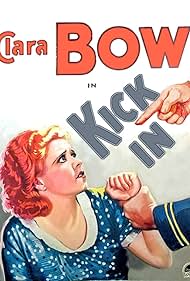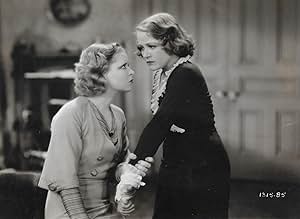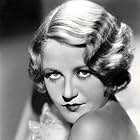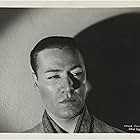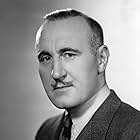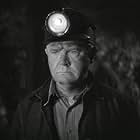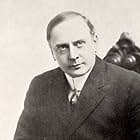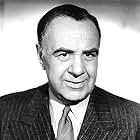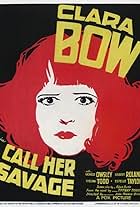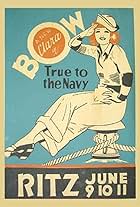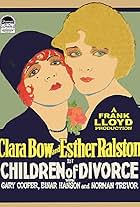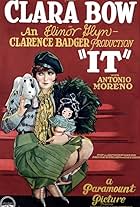Ex-con Chick Hewes (Regis Toomey) tries to go straight with the help of wife Molly (Clara Bow), but circumstances force the couple into involvement in a serious crime.Ex-con Chick Hewes (Regis Toomey) tries to go straight with the help of wife Molly (Clara Bow), but circumstances force the couple into involvement in a serious crime.Ex-con Chick Hewes (Regis Toomey) tries to go straight with the help of wife Molly (Clara Bow), but circumstances force the couple into involvement in a serious crime.
Donald MacKenzie
- Detective
- (uncredited)
J. Carrol Naish
- Sam
- (uncredited)
Ben Taggart
- Detective Johnson
- (uncredited)
Kent Taylor
- Counter Man in Shop
- (uncredited)
Phil Tead
- Burke, Reporter
- (uncredited)
- Director
- Writers
- All cast & crew
- Production, box office & more at IMDbPro
Storyline
Did you know
- TriviaTwo days after this film finished shooting, Clara Bow was the target of an explosive and unprecedented expose published in a tabloid called the Coast Reporter. Among other charges, the paper claimed that Bow was guilty of lesbianism, incest, bestiality, public indecency, and that she had been implicated in a murder-suicide case in Mexico.
- ConnectionsFeatured in Clara Bow: Discovering the It Girl (1999)
Featured review
Here's a real treat for buffs: Clara Bow's last film for Paramount, a very rare title, never on TV or video, but recently restored and shown to audiences for the first time in decades. Some rediscovered movies fall short of expectations, but Kick In is a winner all the way, well written, well acted, and relentless. This is a tough crime melodrama which puts most of its characters through absolute hell, tightening the screws as it goes along. Although it's a Pre-Code talkie from the early '30s, Kick In plays more like one of those bleak, paranoia soaked thrillers from the late '40s, and that may have been a prime reason behind its failure on its initial release. This was not a movie set to gladden the hearts of Depression-weary viewers. A solid noir like this one can be an exhilarating experience in its own way, but "feel good" it's not, and audiences of 1931 just weren't buying.
On top of that, star Clara Bow had been through a great deal of personal (albeit highly publicized) hell of her own just prior to the production of this film, and was under a terrible strain during the shooting. It's said that she was barely able to complete the picture, and its failure ended her long and lucrative association with Paramount, an association far more lucrative for the studio than for their biggest star. It's a terrible irony, for the film is one of Clara's strongest talkies. There's little evidence on screen of her shaky emotional health, aside from some facial puffiness noticeable at times, and her role suits her talents perfectly. But it's also true that much of the weight of the drama is carried by an outstanding supporting cast, especially Regis Toomey as Clara's husband, Paul Hurst as a mean cop, and ever reliable Donald Crisp as the Police Commissioner. Buffs will also recognize the ill-fated James Murray, star of King Vidor's silent classic The Crowd, in a significant role.
Viewers unaccustomed to Pre-Code movies may be startled by the frank depiction of a key character's drug addiction. This coke addict -- or "snowbird," as he's called -- is depicted as pathetic and weak, yet pitiable. This is no Reefer Madness, it isn't campy or laughable, and the writers weren't stupid. The people who made this film seem to have known what they were talking about. We don't smirk at naive dialog here, because there isn't any. There are occasional touches of humor in Kick In, but the plight of the characters is so harrowing that for the most part we watch tensely, hoping for the best, but dreading the outcome. I won't give away the ending, but it might surprise you.
Flaws? Well, the judicious use of background music at key moments might have helped (it would be another year or two before film scoring really kicked into gear), but, on the other hand, the lack of music might actually be a plus: the naturalistic soundtrack heightens the suspense, making the experience similar to watching a gripping stage drama. Pictorial quality is amazingly good, thanks to the fact that the restored prints of Kick In derive from the original nitrate camera negative. Happily, this is one case where a movie emerged from a long hibernation looking just about as good as it must have looked when it was new. And unlike some of those aforementioned rediscoveries, i.e. the disappointing ones, Kick In is a movie that seems to have improved with the passage of time. We can only hope this film finally gets the wide exposure and attention it deserves.
On top of that, star Clara Bow had been through a great deal of personal (albeit highly publicized) hell of her own just prior to the production of this film, and was under a terrible strain during the shooting. It's said that she was barely able to complete the picture, and its failure ended her long and lucrative association with Paramount, an association far more lucrative for the studio than for their biggest star. It's a terrible irony, for the film is one of Clara's strongest talkies. There's little evidence on screen of her shaky emotional health, aside from some facial puffiness noticeable at times, and her role suits her talents perfectly. But it's also true that much of the weight of the drama is carried by an outstanding supporting cast, especially Regis Toomey as Clara's husband, Paul Hurst as a mean cop, and ever reliable Donald Crisp as the Police Commissioner. Buffs will also recognize the ill-fated James Murray, star of King Vidor's silent classic The Crowd, in a significant role.
Viewers unaccustomed to Pre-Code movies may be startled by the frank depiction of a key character's drug addiction. This coke addict -- or "snowbird," as he's called -- is depicted as pathetic and weak, yet pitiable. This is no Reefer Madness, it isn't campy or laughable, and the writers weren't stupid. The people who made this film seem to have known what they were talking about. We don't smirk at naive dialog here, because there isn't any. There are occasional touches of humor in Kick In, but the plight of the characters is so harrowing that for the most part we watch tensely, hoping for the best, but dreading the outcome. I won't give away the ending, but it might surprise you.
Flaws? Well, the judicious use of background music at key moments might have helped (it would be another year or two before film scoring really kicked into gear), but, on the other hand, the lack of music might actually be a plus: the naturalistic soundtrack heightens the suspense, making the experience similar to watching a gripping stage drama. Pictorial quality is amazingly good, thanks to the fact that the restored prints of Kick In derive from the original nitrate camera negative. Happily, this is one case where a movie emerged from a long hibernation looking just about as good as it must have looked when it was new. And unlike some of those aforementioned rediscoveries, i.e. the disappointing ones, Kick In is a movie that seems to have improved with the passage of time. We can only hope this film finally gets the wide exposure and attention it deserves.
Details
- Runtime1 hour 15 minutes
- Color
Contribute to this page
Suggest an edit or add missing content

